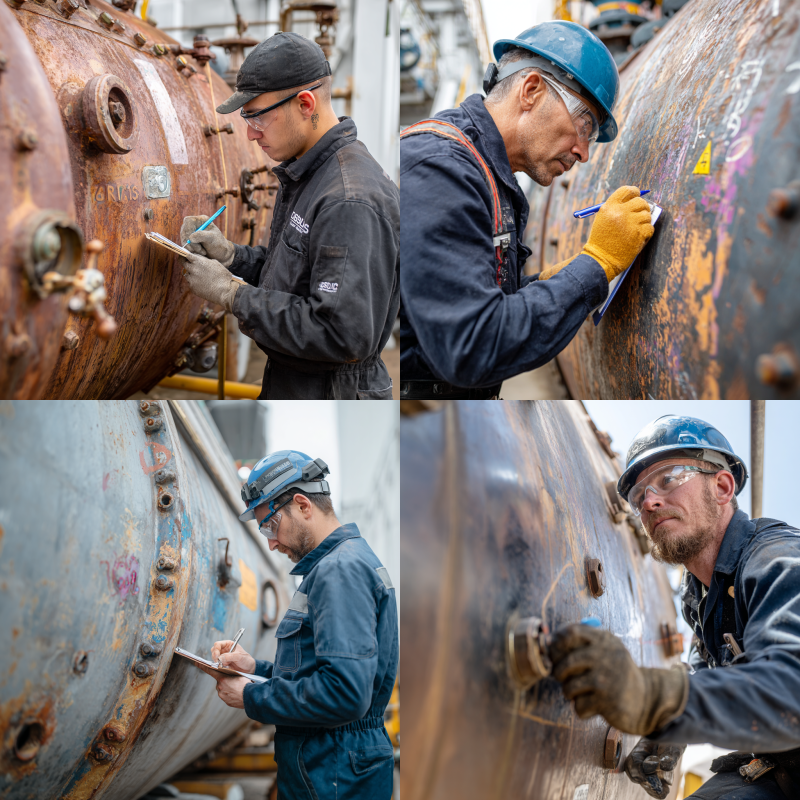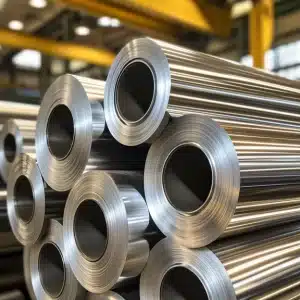
How Often Should a Pressure Vessel Be Inspected? Stay Compliant and Safe
Why It Matters: How Often Should a Pressure Vessel Be Inspected
Regular inspections are the backbone of pressure vessel safety. If you are wondering, “how often should a pressure vessel be inspected,” you are already a step ahead in safeguarding your workers, your facility, and your bottom line. Pressure vessels can carry hazardous gases or liquids that place immense stress on their walls. Over time, tiny cracks, corrosion, or faulty gauges can turn into serious hazards. In fact, federal agencies have highlighted that neglected vessels can fail catastrophically, causing toxic leaks, fires, or even explosions. The good news, though, is that a well-planned inspection routine is easier to maintain than you might think. By understanding regulatory requirements, scheduling regular checks, and implementing a risk-based approach, you can stay compliant and keep your pressure vessels running safely.
How often should a pressure vessel be inspected
You will see varied guidelines on the inspection frequency for pressure vessels. In many regions, annual external checks are the minimum standard, with internal inspections often required every three to five years depending on the vessel’s contents and operating conditions. However, authorities in the United States typically require at least one external survey every five years, along with a more thorough internal inspection at least every ten years or sooner if any issues arise. Some countries in Europe, Asia, and Australia enforce similar rules, though the timeline might shift slightly based on local codes.
Many industry experts lean on a “one-year rule” for external visual checks in higher-risk environments, a “three-year rule” for internal checks in moderate-risk settings, and a “five-year rule” for standard installations. Yet, these are general statements, not universal law. Your vessel’s inspection schedule depends on several factors:
- Type of vessel and its geometry
- Nature of the substance under pressure (toxic, corrosive, flammable)
- Working and design pressures
- Operating temperature ranges
- Age and material of the vessel
For a deeper overview of vessel basics, you can see what is a pressure vessel. Many businesses in the United States, especially those involved in oil refining or chemical processing, rely on recognized codes from the American Society of Mechanical Engineers (ASME) and the National Board of Boiler and Pressure Vessel Inspectors (NBBI). These codes help define safe design limits and lay out how often you should schedule thorough inspections/
If you are searching for a pressure vessel manufacturer in the USA, ask about their recommended inspection timelines. High-quality manufacturers typically design vessels to align with ASME or other international standards, ensuring a suitable safety margin. Still, even the best-engineered equipment degrades over time if you skip essential checks.
Follow regulatory requirements
Staying compliant means following recognized guidelines like the ASME Boiler and Pressure Vessel Code, the API 510 code for in-service inspections, and any local laws that apply. In the United States, these requirements dictate:
- External visual inspections at least every five years
- Internal inspections at least every ten years, or half the estimated remaining life if that lifespan is shorter
- Regular pressure tests when recommended by a certified inspector
Industry experts emphasize that working pressure (the maximum expected operating pressure in normal use) must not exceed design pressure (the vessel’s safety margin). Beyond that, some states or agencies expect more frequent checks for vessels handling especially hazardous substances. For instance, you might need yearly or biannual inspections if your vessel contains highly flammable or corrosive fluids.
In many other regions, governments provide frameworks similar to ASME and API guidelines to ensure consistent inspection schedules. Australia, New Zealand, Singapore, and several European countries apply both internal and external exams between one and five years, depending on the nature of the system and documented performance history.
Adopt risk-based inspection strategies
Not all pressure vessels age the same way. Corrosion can accelerate in high-temperature or humid environments, while certain chemicals can weaken metal faster. That is where Risk-Based Inspection (RBI) shines. RBI involves evaluating the likelihood and consequence of failure, then tailoring your inspection intervals accordingly. In other words, you screen each vessel for its unique risk factors, then shift your schedule to match the vessel’s actual condition rather than a blanket rule.
Under RBI, you weigh factors like:
- Corrosion rate: Do you see pitting, thinning, or surface wear?
- Operating environment: High temperature, severe chemicals, or frequent pressure cycling can accelerate degradation.
- Consequence of failure: If a vessel rupture would harm employees or disrupt critical operations, you tighten your inspection frequency.
- Historical performance: If past inspections revealed minimal wear, perhaps you can lengthen intervals (but only if an engineer signs off).
By checking these metrics, you might discover that some vessels need more frequent scrutiny, while others can safely stretch beyond the minimum interval. This approach saves time and money, reduces unexpected downtime, and maintains high safety standards. Revisit your RBI plan as operating conditions change, especially if you upgrade processes or shift to more corrosive media.
Perform essential inspection steps
A solid maintenance plan will not only tell you when to inspect, but also what to look for. Each exam, whether internal or external, typically checks:
External visual inspection
You will want to note bulges, dents, corrosion, or leaks around seams and welds. Inspect the vessel’s entire outside surface, including attachments like supports and nozzles. Surface irregularities can point to internal damage too. If you see chipped paint or rust streaks, that may signal thinning metal underneath.
Internal visual examination
During a thorough internal inspection, you enter (if safe) or use remote cameras or drones to look for pitting, cracks, or scale. Check for distortion in the vessel’s geometry, such as ovality or sagging. If you discover any suspicious areas, more advanced tests may follow, like ultrasonic thickness measurements or dye penetrant testing
Non-destructive testing (NDT)
NDT methods shine a light on hidden flaws without damaging the vessel. Techniques include:
- Ultrasonic testing (UT) to measure wall thickness and detect hidden corrosion
- Radiographic testing (RT) to spot internal cracks or inclusions in welds
- Magnetic particle testing (MT) for ferromagnetic materials, revealing surface or near-surface defects
- Dye penetrant testing (PT) to locate fine surface cracks in non-ferrous materials
Pressure tests
Hydrostatic or pneumatic tests subject your vessel to pressures slightly above its design pressure. This step helps detect leaks or structural weaknesses before a real emergency occurs . Hydrostatic testing often fits high-pressure applications, while pneumatic testing may be chosen for low-pressure systems or in settings where you cannot use water. Nonetheless, any pressure test must follow strict safety measures to protect personnel and equipment.
Documentation and repairs
Once your inspector completes the tests, all findings (and any recommended repairs) should be logged. If your vessel needs a fix, schedule it promptly. According to some guidelines, you can defer repairs in special circumstances, but the new deadline should be formally approved. Keep in mind that even minor repairs must align with standard codes and be verified by a qualified inspector.
Regular checks like these do more than keep you in good standing with regulators. They also extend your vessel’s service life and reduce the risk of expensive, unplanned shutdowns. For more on preventing downtime with ongoing care, you can visit pressure vessel maintenance.
How often should a pressure vessel be inspected
You might see some guidelines saying once a year, and others saying five or even ten years. The truth is that there is no single number valid for every situation. Factors such as the vessel’s material, operating pressure, type of stored medium, environmental conditions, and usage patterns all shape how soon you need your next check. At minimum, you want to stay within legal requirements, which usually call for external inspection every few years and internal inspection at a set interval or after any major event.
Get Your Inspection Schedule Back on Track
Red River’s certified inspectors have helped 150+ facilities catch up on overdue inspections without operational shutdowns. We work around YOUR schedule, not the other way around.
Frequently asked questions
1.What is pressure vessel maintenance?
Pressure vessel maintenance involves regular inspections, testing, and repairs to ensure safe operation and regulatory compliance. It includes checking for cracks, corrosion, pressure system functionality, and following ASME codes to prevent failures..
2. How often should a pressure vessel be inspected?
Pressure vessels should be inspected every 1-5 years depending on service conditions, with high-risk environments requiring more frequent checks. ASME codes and local regulations determine specific intervals based on operating pressure and materials.
3. What if my vessel shows small cracks?
Even minor defects can escalate if left unaddressed. Consult an inspector or engineer immediately to determine if the vessel must be repaired or removed from service. They may suggest weld repairs, patching, or further NDT to gauge the extent of the damage.
4. How to maintain a pressure vessel?
Maintain pressure vessels through regular ASME-compliant inspections, proper material selection, pressure monitoring, corrosion control, staff training, detailed record-keeping, and immediate repair of detected cracks or defects.
5. How does risk-based inspection help me?
Risk-based inspection allows you to personalize intervals based on factors like corrosion rate and operating environment. It prevents over-inspecting low-risk vessels and under-inspecting high-risk ones. This approach often saves money while boosting safety.
Key takeaways
- Regular inspections are vital for detecting cracks, corrosion, or leaks before they cause major damage.
- Regulatory guidelines like ASME and API 510 outline minimum frequencies for both external and internal checks.
- A risk-based inspection approach personalizes your schedule for maximum efficiency and safety.
- Essential activities, including visual checks, non-destructive testing, and pressure tests, keep your vessel safe and code-compliant.
- Thorough documentation and timely repairs ensure a longer lifespan and reduce chances of unexpected failures.
Related Blog Post

Marine-Grade vs Standard Stainless Steel

Pros and Cons of Vertical Integration

How to Dry Desiccant Properly and Regain Its Effectiveness

Why Do Gas Turbines Need Fuel Water Separator Vessels, Red River

